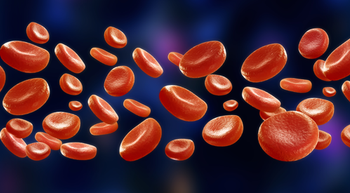
Myeloma Treatment Landscape Continues to Change
Monoclonal antibodies, proteasome inhibitors, and targeted agents are among the many options in the crowded treatment landscape of relapsed/refractory multiple myeloma, and the emergence of drugs, such as venetoclax (Venclexta) and selinexor, could add to the complexity of this paradigm, said Cristina Gasparetto, MD.
Monoclonal antibodies, proteasome inhibitors, and targeted agents are among the many options in the crowded treatment landscape of relapsed/refractory multiple myeloma, and the emergence of drugs, such as venetoclax (Venclexta) and selinexor, could add to the complexity of this paradigm, said Cristina Gasparetto, MD.
Although both the BCL-2 inhibitor venetoclax and the XPO1 inhibitor selinexor have shown promise in previously treated patients with myeloma, they are not without safety concerns. In March 2019, the FDA announced that it was placing a partial hold on all clinical trials evaluating venetoclax in multiple myeloma. The decision followed a review of data from the phase III BELLINI trial (M14-031; NCT02755597), in which there was a higher rate of death observed in patients in the venetoclax arm compared with those in the control arm.1Specifically, the rate of reported deaths in the venetoclax arm was 21.1%, with 6.7% considered to be treatment-emergent. Of the 13 treatment-emergent deaths, 8 were associated with infection.
“I have been using venetoclax for several years, and I was surprised because I have patients on single-agent and combination venetoclax who are doing phenomenally,” said Gasparetto, an associate professor of medicine and director, Multiple Myeloma Program at Duke Cancer Institute. “[I'm not seeing] increased signals of immunosuppression or risk of infection. I don't know if these adverse events are due to the proteasome inhibitor or something else, but we are now waiting to re-open some important studies.”
Additionally, selinexor will have to overcome regulatory obstacles before potentially becoming part of routine clinical practice. Despite yielding substantial response rates and encouraging survival data, the FDA’s Oncologic Drugs Advisory Committee (ODAC) voted 8 to 5 against an accelerated approval for a new drug application (NDA) for the agent in February 2019.
The decision came on the heels of safety data released from the phase IIb STORM trial, which showed significant incidence of fatigue (72.4%), thrombocytopenia (71.5%), nausea (69.9%), and anemia (65.9%).2 Treatment-related adverse events also resulted in patient deaths in this study. In March 2019, the FDA announced it was adding 3 months to the review period for an NDA for selinexor in the treatment of patients with penta-refractory multiple myeloma, moving the new decision date to July 6, 2019.
In an interview with OncLive, a sister publication of Oncology Nursing News, Gasparetto discussed the rapidly evolving field of relapsed/refractory myeloma.
What is some of the key research being done in relapsed/refractory myeloma?
Gasparetto: There have been some important studies focusing on combinations of pomalidomide (Pomalyst) and dexamethasone. In my presentation, I discussed the recent results of the ELOQUENT-3 trial. This was a phase III randomized study comparing pomalidomide plus dexamethasone with elotuzumab (Empliciti) plus pomalidomide/dexamethasone. It clearly showed that the addition of elotuzumab to therapy after first relapse improves overall response rate (ORR) and progression-free survival (PFS). It is very interesting to dissect this study; however, the most important takeaway was that the addition of elotuzumab did not cause any additional toxicity. This is a good combination for patients with early relapsed myeloma.
I also briefly discussed the OPTIMISMM study, which was another study reviewing the combination of pomalidomide, dexamethasone, and the proteasome inhibitor bortezomib (Velcade). The study was presented by Paul G. Richardson, MD, of Dana-Farber Cancer Institute, in 2018. Results showed that the combination was superior to the doublet [of pomalidomide and dexamethasone], with increased ORR and PFS. Even in the relapsed setting, triplets can have higher durability of response and response rates than the doublets. I also presented data from the ARROW study, which showed that weekly administration of carfilzomib (Kyprolis) was superior to the bi-weekly administration. Patients were probably able to sustain treatment longer with the lessened toxicity. They were also able to sustain a higher dose. We knew from the beginning that a higher dose of carfilzomib correlates with a better outcome.
I was also able to touch base on a couple of important studies for patients who have failed multiple lines of therapy—patients with penta-refractory disease. This patient population doesn't have many options left; they come to us seeking clinical trials and different targeted therapies. I had the fortune of working with 2 important drugs over the last few years; the first was selinexor, an XPO1 inhibitor. This can be a difficult drug if you don't know how to use it, and I was definitely a little intimidated at first. However, now I really love it. You learn to support the patients; I've had patients on selinexor for more than a couple years who are doing very well. There are a lot of dose modifications and reductions after the first few cycles. Selinexor is given orally, and in combination with dexamethasone, it is given twice weekly. Many patients also receive this combination once weekly and are doing quite well with good quality of life and sustained responses.
Venetoclax targets the t(11;14) population, which accounts for about 30% of all patients with myeloma. Responses are phenomenal in this patient population. When combined with dexamethasone, responses were about 60%. Then, we see with carfilzomib responses are nearly 100%. There was some concern with the increased risk of infection, so now all patients are receiving antibiotics and prophylaxis. I've had the good fortune of working with venetoclax for many years and I've seen great responses.
At the 2018 ASH Annual Meeting, we also saw updates on CAR T cells. The most established in the United States is bb2121,which is going for registration. Noopur Raje, MD, of Massachusetts General Hospital, presented the results at the meeting and there were incredible response rates. The durability of response was a little disappointing, so we're all seeking modifications and additional novel targets. All of these agents and targets have definitely impacted this patient population.
There have been some trials halted with venetoclax. Could you discuss this further?
Recently, there was a phase III randomized study in which patients in the relapsed setting were randomized to receive bortezomib and dexamethasone, which is a standard backbone, versus bortezomib, venetoclax, and dexamethasone. The primary endpoint was PFS, which was met. The improvement was statistically significant. Unfortunately, the overall survival was determined to be inferior because there were an increased number of deaths in the experimental arm primarily due to bacterial infections. That raised a lot of questions; we are all waiting for additional analysis with this drug.
How is selinexor being used in this space?
Selinexor is not easy, and we need to do a lot of dose modifications and supportive care. However, as I mentioned, I do have patients on low-dose selinexor who are maintaining their response. I love selinexor now, but it does have some unusual factors, like the central nervous system penetration, which needs to be further explored. There is an additive effect with other drugs. I presented data at the 2018 ASH Annual Meeting on its combination with daratumumab (Darzalex). We saw an ORR of close to 80%; the duration of response is also significant. I really hope we can have more positive feedback from ODAC and the FDA in the future so that this agent can become more widely used. It is a real drug, and it works.
Is there anything that you would like to add?
In the relapsed/refractory setting, it is important to think about how to best sequence these drugs. We do have many options, and how we make a decision will be based on patients' comorbidities, type of myeloma, type of relapse, and how fast they relapse after induction. We are all learning about how we can apply what we learn from large studies to our patient populations.
Read more:
This article was originally published on
References
1. AbbVie Provides Update on VENCLEXTA®/VENCLYXTO® (venetoclax) Multiple Myeloma Program [news release]. AbbVie. Published March 19, 2019. https://bit.ly/2Ogtt7M. Accessed May 24, 2019.
2. Chari A, Vogl DT, Dimopoulos MA, et al. Results of the pivotal STORM study (part 2) in penta-refractory multiple myeloma (MM): deep and durable responses with oral selinexor plus low dose dexamethasone in patients with penta-refractory MM. Blood. 2018;132:132-598. doi: 10.1182/blood-2018-99-116663.
Newsletter
Knowledge is power. Don’t miss the most recent breakthroughs in cancer care.

















































































